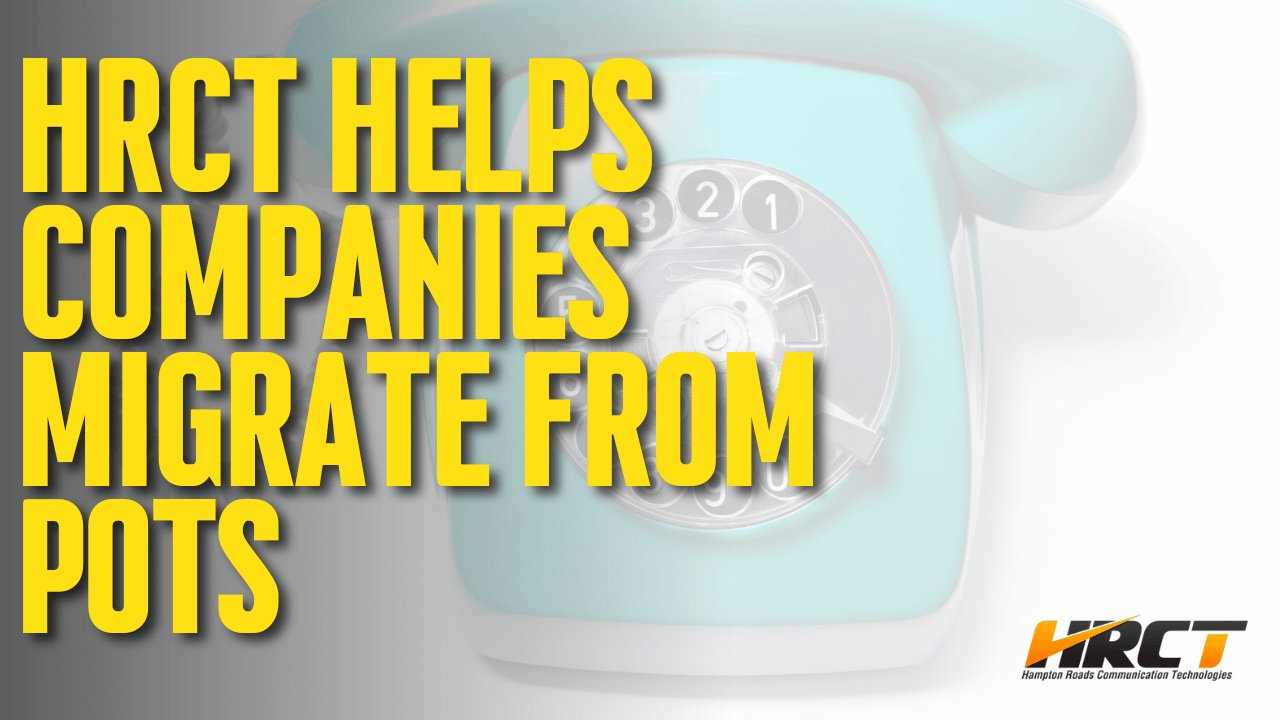As of August 2, 2022, telephone networks are required to sunset all long-standing POTS phone line connections in the United States.
This mandate, released by the FCC in August 2019, is estimated to cost any organization still using these outdated phone lines thousands of dollars per month. POTS (plain old telephone system) lines have been in use for over 100 years and were the primary means of communication before the advent of cell phones and VoIP (voice over internet protocol) systems.
While POTS lines are still reliable, they are increasingly expensive to maintain and are not capable of supporting modern communications needs.
Many organizations have already switched to VoIP systems, which offer significant advantages over POTS lines, including lower costs, increased flexibility, and enhanced features such as call forwarding and caller ID. For those organizations that have not yet made the switch, now is the time to do so.
The transition to VoIP may be daunting, but it is essential for maintaining communications capabilities in the modern world.

What Are POTS Lines
Plain Old Telephone Service (POTS) lines are copper-wired telephone lines that use analog technology.
They have been used for over 100 years and have an estimated 36 million active lines. But their lifetime is quickly ending.
The biggest reason POTS lines are being phased out is the advent of VoIP (Voice over Internet Protocol). VoIP uses digital rather than analog signals, which can be transmitted over the internet rather than through physical telephone lines. This offers several advantages in terms of cost, flexibility, and features.
For example, VoIP can be used to make calls from anywhere in the world, and customers can choose from a wide range of VoIP plans that offer different features at different price points. In contrast, POTS lines are limited to local calling areas and typically only offer basic features such as caller ID and call waiting.
As a result, VoIP is rapidly becoming the preferred choice for both residential and business users, and POTS lines are being phased out.
What Are POTS Lines Used For?
POTS (Plain Old Telephone Service) lines are still in use by many businesses today, primarily for voice phone calls.
However, POTS lines can also be used for other purposes, such as faxing and dial-up internet access. In addition, some businesses use POTS lines as a backup in case their primary digital lines fail.
While POTS lines are not as fast or efficient as modern digital lines, they can still be a valuable tool for businesses that maintain reliable communication.
Examples of services using POTS lines:
- Fax machines
- ATMs
- Elevator call boxes
- Fire alarms
- Burglar alarms
- HVAC systems
- And More
Any organization with POTS lines is looking at a significant increase in their telephone bill starting in August 2022.
Right now, one line can cost $65-100 per month. After August, that could rise into the thousands, with some lines costing $3,000 per month. The reason for this increase is the change from copper to fiber optic lines.
The new infrastructure will be able to carry more data at a higher speed, but it is also much more expensive to maintain. As a result, organizations need to start making preparations now to avoid any service disruptions. One way to do this is to switch to VoIP, which uses an internet connection instead of traditional phone lines.
VoIP is often more reliable and can be more affordable in the long run. However, it is important to ensure a strong internet connection before making the switch. Otherwise, you may have even more problems than you started with.
Why Are POTS Lines Being Retired?
The FCC has stated that POTS (Plain Old Telephone Service) is no longer sustainable for several reasons.
- First, maintaining and repairing the aging infrastructure is becoming increasingly prohibitive.
- Second, the number of POTS subscribers steadily declines as more people switch to VoIP (Voice over Internet Protocol) or cellular service.
- Third, POTS lines cannot handle the increasing demand for data services such as high-speed Internet and streaming video.
- Finally, most 911 calls are now made from cell phones, which do not use POTS technology.
As a result, the FCC has been working to phase out POTS service in favor of newer, more robust technologies.
HRCT Can Help Local Organizations Transition From POTS Services
In just a few short years, the price of a traditional landline phone service is expected to skyrocket. Federal regulations currently prohibit major networks from deactivating or raising prices on existing POTS lines, but those regulations are set to expire in August 2022.
After that, networks will be free to do as they please, and customers can expect significant increases in their monthly bills. In some cases, the price of using a POTS line could go up by as much as $2,000 per month. For many people, the only alternative will be to switch to a VoIP service, which is typically much cheaper.
Businesses that rely on POTS for their phone service may face higher bills. In addition, the quality of POTS service is likely to decline as networks focus their resources on more profitable services.
As a result, August 2, 2022, could mark the end of an era for POTS service.
HRCT can help you assess your current situation and develop a plan to ensure compliance. Our team of experts will work with you to identify where you currently have POTS lines, evaluate the potential impact of the mandate, and develop a customized plan to ensure compliance.
Don’t wait until it’s too late – contact HRCT today to get started.



